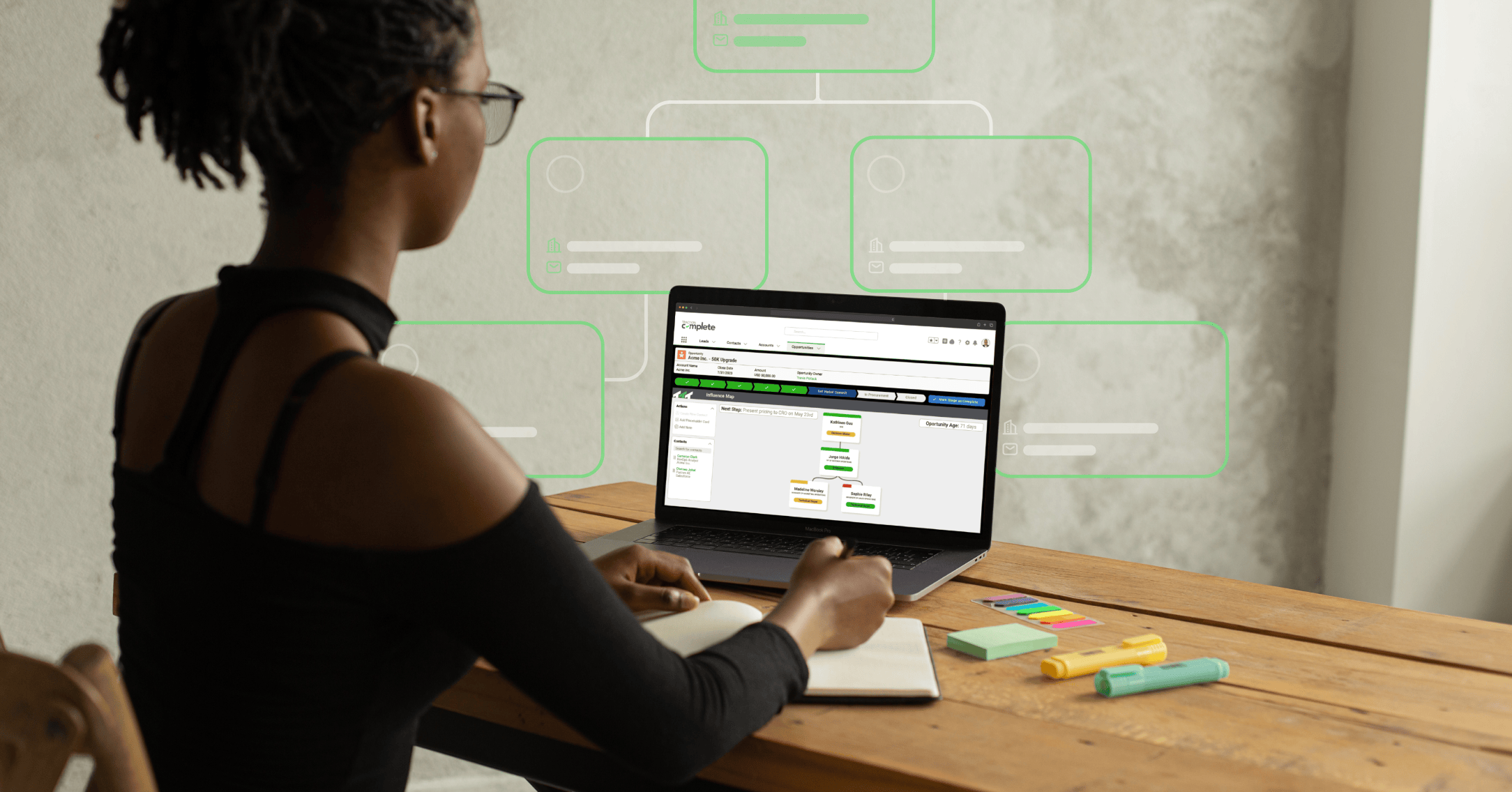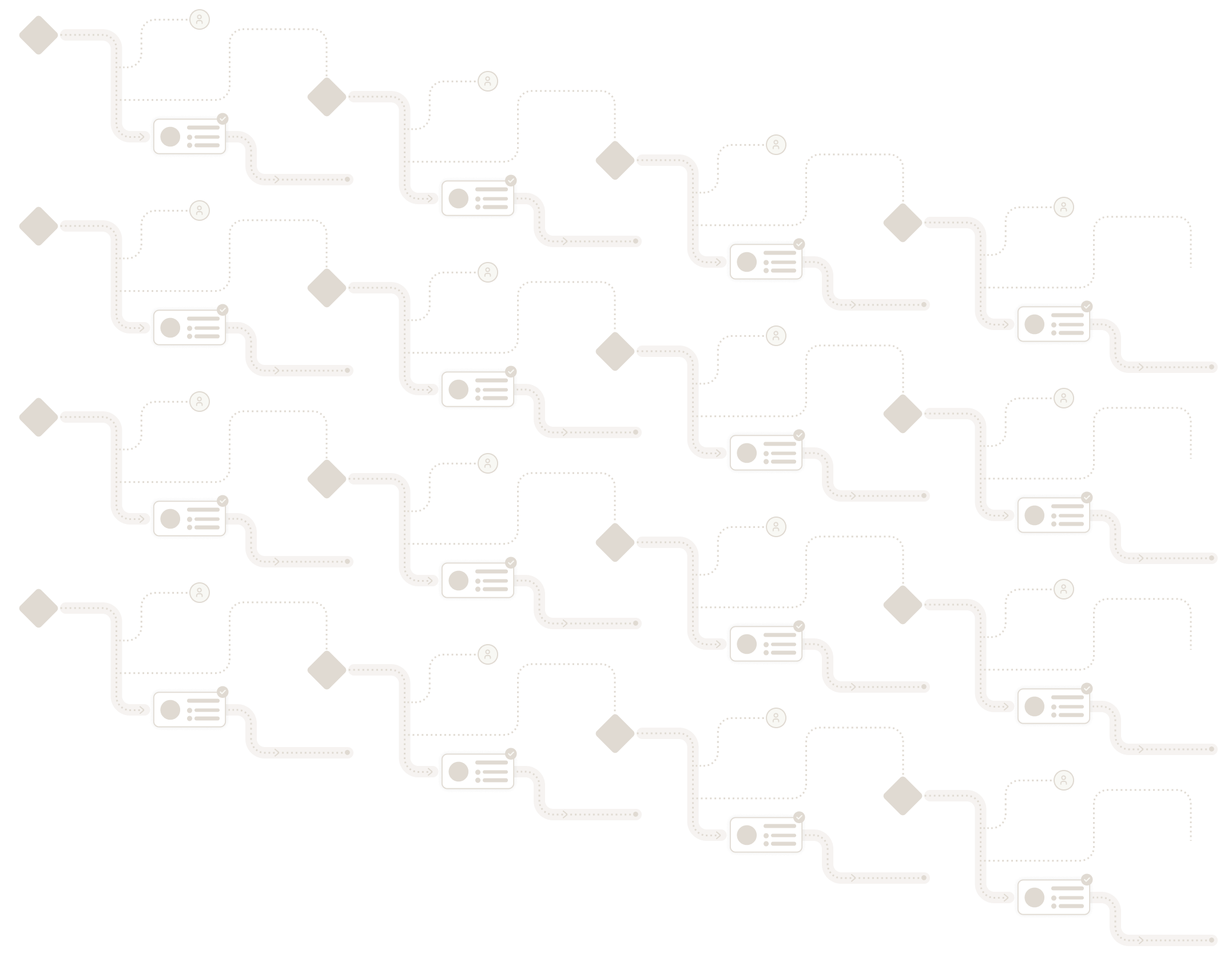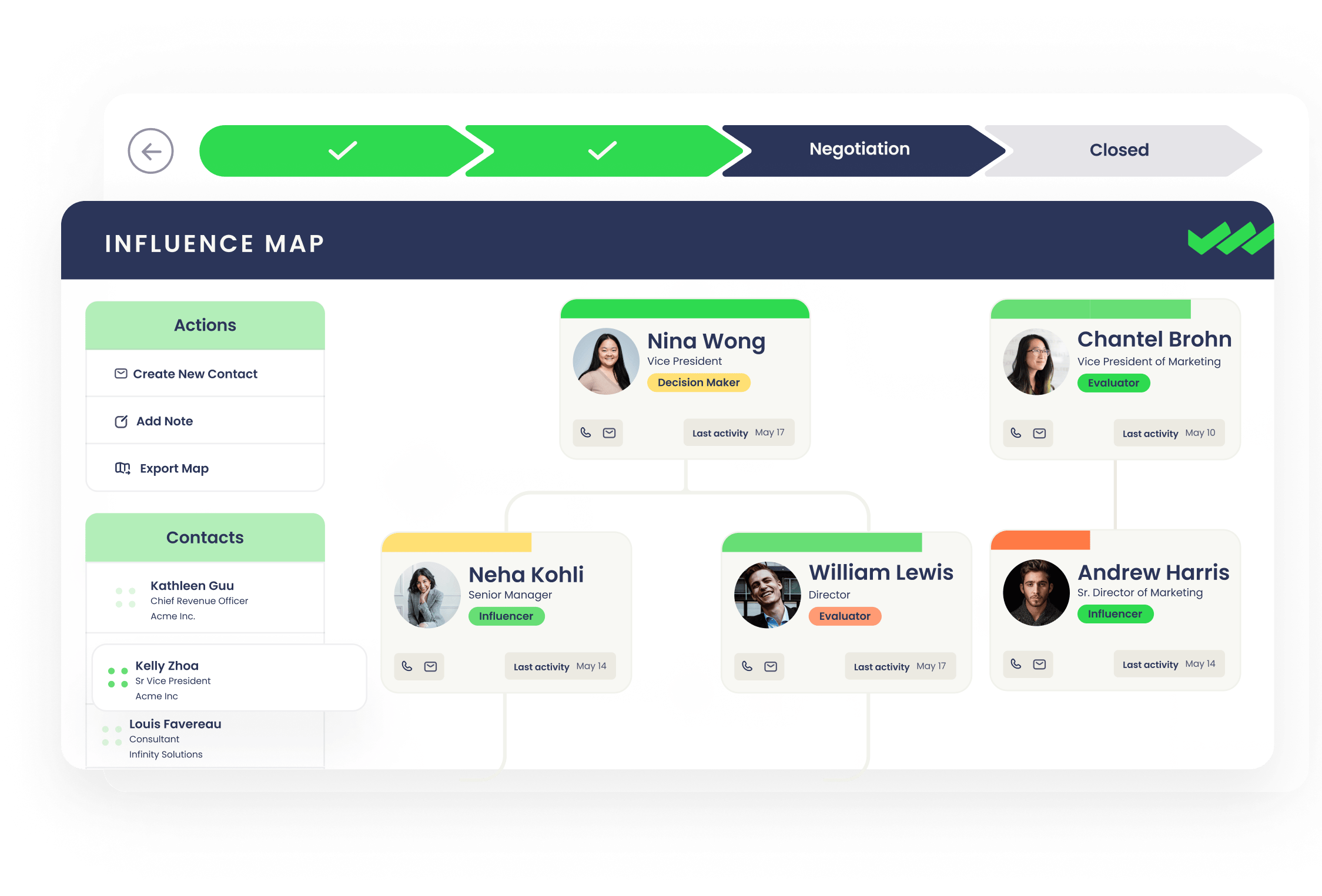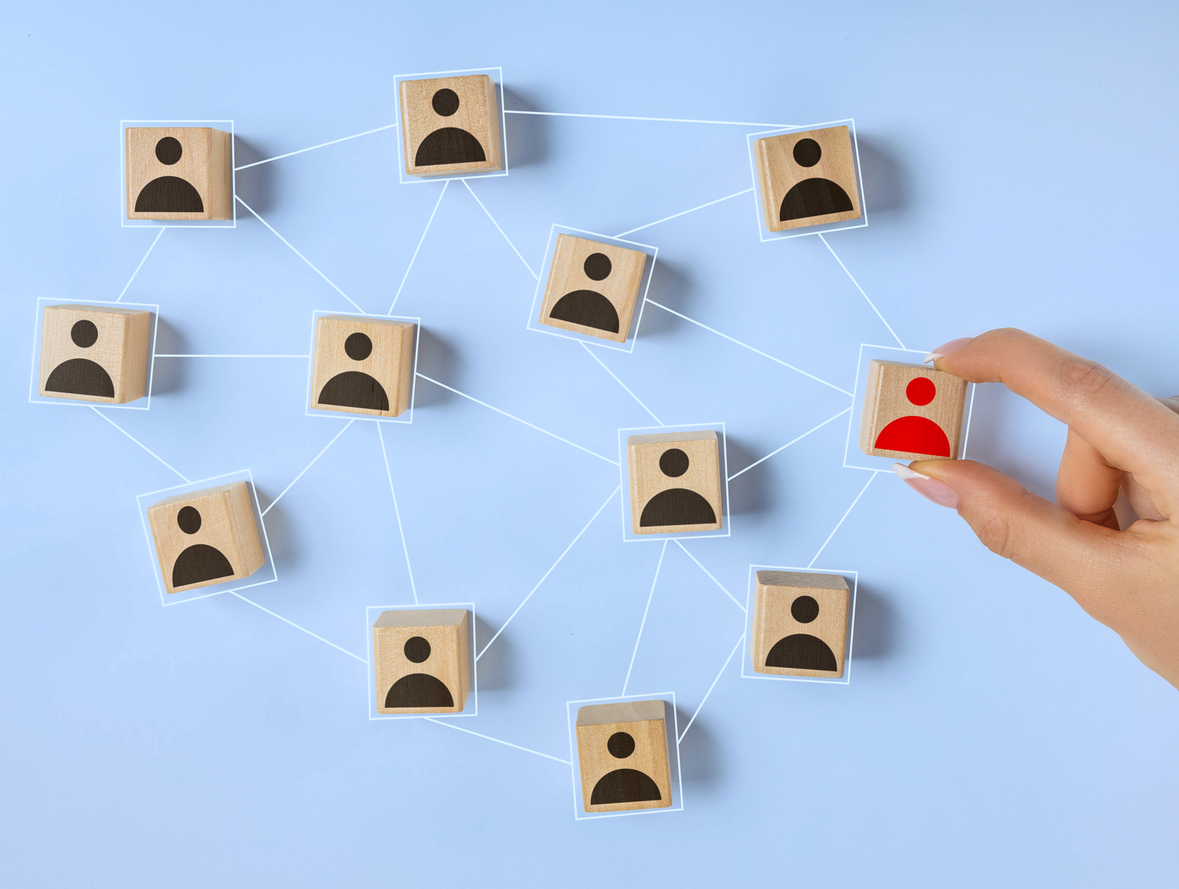Map the relationships that matter in Salesforce
Visualize buying groups and identify stakeholders with influence to win more deals, faster. Track role, activity, advocacy level, and more with relationship mapping in Salesforce.
stakeholders are involved in the average buying committee

Salesforce doesn’t include relationship maps
Your sales reps are relying on scattered notes and outdated org charts outside of Salesforce, resulting in poor account planning, rocky account handoffs, and missing context.
Account notes are scattered
Without a relationship mapping tool in Salesforce, sales reps are left to take notes externally in Google Docs, Quip, or their notebooks.
Relationship context is missing
Salesforce can store a list of contacts related to an opportunity, but it doesn’t illustrate how they are connected or influence deals.
Attribution is missed
Because it’s a tedious process, reps often don’t add many contact roles on an opportunity which affects marketing’s ability to track attribution accurately.

Solution
Create relationship maps to advance deals
Build relationship maps in minutes using contacts in Salesforce. Understand who are influencers, detractors, and decision makers and add notes for context.
Visualize every relationship
Drag and drop contact cards onto a canvas, draw lines, and capture notes all in one place so you can visualize a company’s structure and dynamics.
Streamline account planning
Strategize and build actionable account plans based on the buyer group and their relationships to de-risk your deal.
Collaborate seamlessly
Help new reps or other teams quickly understand the dynamics within a deal without needing to sift through scattered notes.

Swipe To View
Features
Identify the key players
Contact cards
Keep track of who you’ve spoken to, their role, and their level of advocacy.
Next steps
Record next steps to ensure deals are always progressing.
Influence tracking
Draw lines to uncover who is influencing the decision-maker.
Export
Download maps to include in QBR and deal review presentations.
Notes
Add notes to relationship maps to provide additional context.
Customizable fields
Decide what data is displayed on contact cards.
100% Salesforce native
Use contacts to build relationship maps on opportunities and accounts.
Auto sync
Automatically sync updates made in relationship maps to fields in Salesforce.
FAQ
A partner with answers
-
How do relationship maps help B2B sales teams close more deals?
-
Relationship maps are tools that help sales teams visualize organizational structures, understand relationships between buying group members, and track who holds the political influence to advance deals.
B2B sales team leaders lean on this detailed visibility to identify engagement gaps and mitigate risks throughout the sales process.
-
What is the difference between an org chart, relationship map, and influence map?
-
Org charts capture an organization’s reporting structure but often fail to provide a complete overview.
Relationship maps build on this by not only detailing the reporting structure but also highlighting the relationships among stakeholders.
Influence maps further extend these insights by incorporating the reporting structure, stakeholder relationships, and each stakeholder’s ability to influence a deal.
-
How can I learn more about relationship mapping best practices in Salesforce?
-
We recommend checking out the webinar “Multithreading Tactics to Boost Your Win Rates” to see how sales teams at Salesforce have added relationship mapping to their deal review process. If you have more questions about implementing relationship mapping into your sales process reach out to our team of experts.
Watch the Webinar -
Are Traction Complete’s products 100% native to Salesforce?
-
Yes! All of Traction Complete’s products are 100% native to Salesforce which means there is no integration to maintain and your data never leaves your org.





